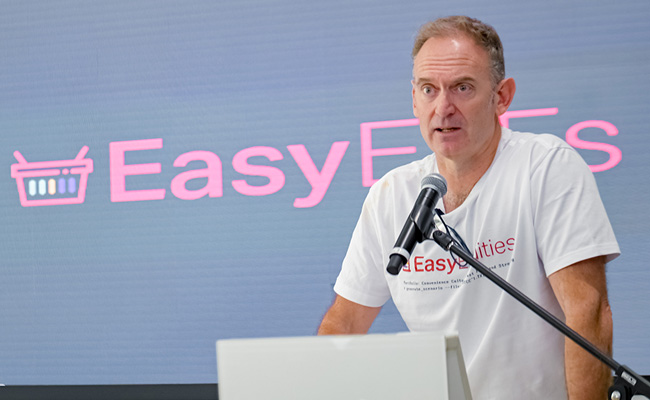In the battle royal announced this week, initiated by the Competition Commission between stock market newcomer A2X (aka David) and the venerable JSE (aka Goliath), who is right?
Obviously, all the arguments will be aired at some point in the future, and a definitive answer will be up to the Competition Tribunal. But given the stakes, it’s worth just looking at the pleas as they stand because, as it happens, there are good arguments on both sides.
And it goes without saying that it’s complicated.
The background is that A2X Markets filed a complaint against the JSE to the commission in October 2022, alleging that the JSE is abusing a dominant market position by engaging in exclusionary conduct. The commission has now referred the JSE to the Competition Tribunal, suggesting it believes there is sufficient weight to A2X’s argument to take the matter further. In fact, the commission is seeking a fine of up to 10% of the JSE’s annual turnover, and remedial orders if the tribunal finds merit.
At the core of the problem is something called the JSE’s broker dealer accounting (BDA) system, and the issue concerns “matched principal trades”.
What is that all about?
In most securities markets, there are two broad ways a broker (or “member firm”) can execute a trade. First, there’s an “agency trade”, where the broker acts purely as an agent, and matches a buyer and seller and earns a commission. The broker never takes ownership of the shares; it just arranges the deal.
The other way is a “principal trade” where the broker buys the shares itself (from the seller) and sells them to the buyer, taking on temporary ownership (and risk).
A matched principal trade is a hybrid: the broker simultaneously buys and sells the same security in equal quantities and at the same price – so the two sides are matched.
This matched system is especially common when a broker operates across different trading venues (for example, the JSE and A2X) or client accounts that can’t directly interact.
A2X consists mostly of secondary listings of companies that have their primary listing on the JSE. Brokers who want to buy a share on A2X and then settle or report it through JSE systems often rely on matched principal trades to square off the transactions between the two venues.
According to the Competition Commission, the JSE allegedly restricts or complicates these matched principal trades in two key ways:
- JSE systems preference. The JSE’s BDA system and settlement processes are optimised for trades executed on its own exchange, not for trades executed elsewhere (like A2X). This makes it difficult for a broker to efficiently conduct a matched principal trade that bridges the two exchanges – even though the underlying security is the same (for example, Anglo American shares).
- Rule treatment difference. The JSE allegedly imposes extra compliance, fees or procedural hurdles on matched principal trades not done on its own market. In effect, a broker wanting to execute on A2X and square through JSE systems faces frictions that make it less attractive to use A2X.
A critical aspect of the argument is that, in general, dominant players in a market, as the JSE is in this case, have heightened responsibilities, particularly if they have critical hardware, and in the past competition authorities have forced companies in this position to share their hardware.
Battle of the bourses
That sounds pretty grim, but as it happens the JSE does have a weighty response. In its Sens response, the exchange says only that it denies these allegations “in the strongest possible terms” and has been advised by external legal counsel that the commission’s claims are without merit.
What it’s getting at is that when it comes to principal trades, there is compliance risk that needs to be taken into account. Matched principal trades, if not carefully controlled, could create settlement risk, mainly where a broker defaults between legs. Hence, its systems are designed to ensure market integrity and settlement certainty; they are not “exclusionary” per se.
Obviously, A2X has a counter argument to the counter argument. In an interview, A2X CEO Kevin Brady says that the JSE has mandated (made compulsory) a “critical bit of infrastructure” (its post-trade/BDA environment) and keeps it closed. In his view, that’s unacceptable for an incumbent with market power.
He accepts the JSE’s need to manage settlement risk, but says you don’t need to force everyone onto the JSE’s system to do that – just share the information needed for risk controls. “Everyone should be able to choose their own system provided the JSE gets the information to manage risk – and vice-versa.”
He also points out that South Africa is an outlier internationally, and that what brokers want is interoperability for best execution.
Sharing the risk information is not as difficult as it seems. South Africa has about 35-40 brokers, but the top 10 constitute about 88% of volume of trade, and most of those are members of both markets. In other words, it would not be a huge imposition in most cases to share risk information.
Because A2X fees are about 40%-50% lower than the JSE’s, what has been happening is that trading has increased on A2X. But not as fast as it could have, Brady claims. He characterises the JSE’s conduct as the classic incumbent pattern: delay, frustrate and constrict rivals to slow leakage of market share. But that ultimately hurts best execution and increases costs for the buy side.
So the summary is this: if the JSE’s systems are de facto essential infrastructure, then restricting matched principal trades could be an abuse of dominance under competition law. But if the tribunal finds that restrictions are genuinely needed for risk control, then the commission’s case is weaker.
But weighed against that argument will be the need for the JSE to upgrade its systems. It’s worth noting that the JSE’s BDA is a 37-year-old mainframe system with a history of failed replacement efforts. That is maybe something new CEO Valdene Reddy will want to look at when she takes over in April.
Top image: Rawpixel/Currency collage.
Sign up to Currency’s weekly newsletters to receive your own bulletin of weekday news and weekend treats. Register here.














